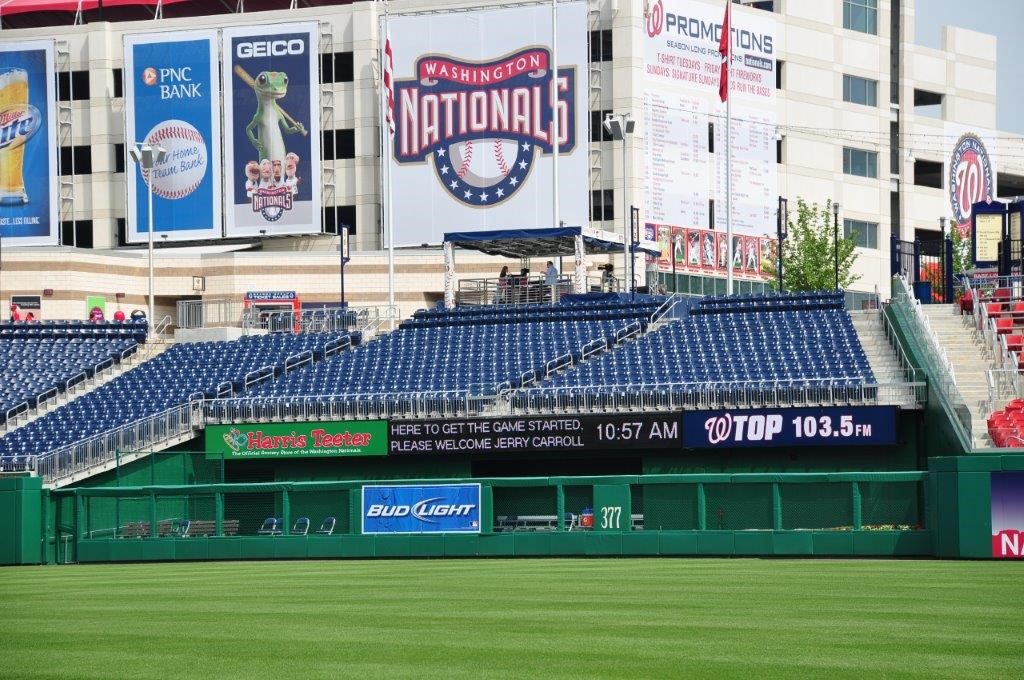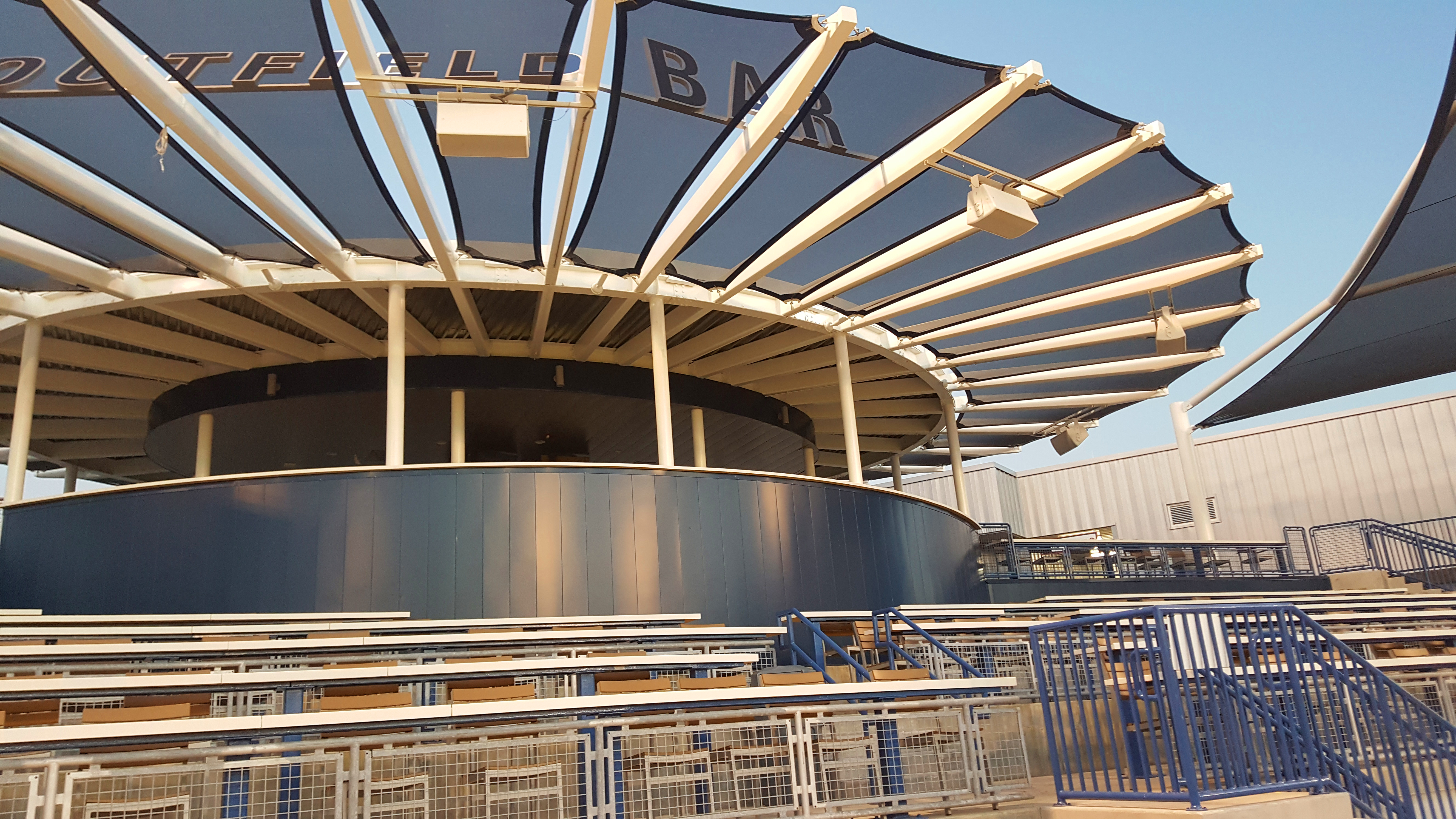When the Americans with Disabilities Act (ADA) went into effect in 1990, the audiovisual landscape was much different than it was today.
“There really wasn’t much concern for ADA at an AV level,” said Chris Mascatello, executive vice president, technology solutions for ANC, a technology service provider for stadiums, arenas, and more. “You had accessibility issues like ramps, and means of ingress and egress, that were taken into account.”
Enacted as a way to ensure that no person is discriminated against on the basis of ability, the act has evolved over time along with technology. As AV systems have become increasingly useful in assisting people with a variety of both physical and sensory disabilities, it’s only natural that the ADA has incorporated provisions that involve more of these systems, which, in turn, has meant more AV professionals are considering accessibility when they approach projects in stadiums and arenas.
[Making AV Technology ADA Compliant]
“It’s probably only a little more than the last decade where you had to start dealing with those types of needs,” Mascatello said, “like having to do captioning work on ribbon boards or primary video screens.”
It may seem straightforward enough, but even captioning has improved greatly over the past few years, thanks in large part to improved communication backbones that are better capable of handling quick, real-time needs. For instance, it’s unlikely the person doing the captioning is on site, which means the live information must be transmitted to their remote location, then the off-site employee captures that text and sends it back for display.

“You introduce another couple levels of technology just to get the captioning done,” he said. “And you have to build up the infrastructure to handle that.”
Aside from data transmission speeds, another consideration for captioning is real estate. In a stadium or arena, screen space can be a valuable asset—advertising might take up every spare pixel—but the captioning still needs a spot that is visible.
“The last few stadiums that are being built, it’s being taken into account,” Mascatello said. “So you might have support ancillary ribbon boards in high visibility areas that are dedicated for captioning, so it’s just adding inventory. The way that a lot of the bigger stadiums were able to handle the shift to captioning was because they have so much more of a physical footprint to work with. They might have added 100 feet in each corner, or a strip underneath the main video board to dedicated captioning space.”
Another benefit to captioning that comes from improvements to infrastructure is that the technology in an attendee’s pocket can be more useful than ever before. Speedier connections means data like captioning can be displayed on an iPhone or iPod, for example—but relying on that has its downsides, too.
“You put the captioning on those types of devices, you’re still taking the eye away from the field,” said Kevin G. McGuire, chairman and CEO of McGuire Associates, a consulting firm that specializes in disability-related laws in relation to sporting and other public venues. While convenient, using a handheld device for captioning, he noted, is not much different from a display screen in how the user may miss some action on the stage or field of play. “In hockey and basketball, that’s kind of critical because everything’s moving. You could have a timeout, maybe a commercial break, and you’ve got a little slowness of the action—but regardless, it just keeps moving. The downside with football is you only have like 30, 45 seconds between plays to get everything reset up, and if that thing doesn’t come back up on that scoreboard, the captioning on a replay, within that little span you have, then you’re going to miss the next play visually.”
Descriptive audio has also seen a boost thanks to improved infrastructure. And that’s good, since one of the items outlined specifically by the ADA requires assistive listening systems be available “when audible communications are integral to the use of a stadium.” But, as Mascatello explained, one of the most interesting results of improved technology as it impacts sound in these spaces is that the overall soundscape has become much better for everyone.
“There’s been more thought to cleaning up the audio mix—using more concert-type sound systems where you can really target and tune the sound signature for the building,” he said. “You’ll notice it’s not as bass-heavy, that they’ve actually cleaned up through digital signal processing, volume handling, and modeling, so that you’re able to provide better audio to those who might be harder of hearing. Even looking to the senior citizens and those with more traditional hearing aids and other devices, more places are trying to cater the sound signature so you can cover a lot of those needs as well.”

It’s those populations that are starting to help raise awareness to accessibility issues in venues like stadiums and arenas. In 2015, there were 47.8 million people aged 65 and older in the United States, and that number is projected to balloon to 98.2 million by 2060, which means more and more people are either experiencing physical and sensory challenges themselves, or are seeing them in loved ones.
“The aging of America is dramatic,” McGuire said. “People are getting older, and they’re losing different facilities, whether it’s sight or hearing or even mobility, for whatever reasons. And what’s interesting is that sometimes they’re not the ones that are advocating their rights—it’s more their daughters and sons and family and friends and associates and caregivers.”
Preparing for that future is key, especially when dealing with large-scale projects like these, where the time from RFP to final installation could be many years away. The speed at which technology develops means new products that could better address accessibility could be just on the horizon.
“Projects could take three years to construct, but in that three-year period what we thought was the best option to go with at the beginning, by the time we’re done with the project, there could be this newer product out there that didn’t exist. When do you draw that line? It just keeps getting better and better, and with technology, it can be hard to keep up with it,” McGuire said.
“You are walking a fine line,” Mascatello agreed. His advice is to trust your gut. Pay attention, for example, at InfoComm when you see the products a manufacturer is working on, and then you see an update the following year and it’s beginning to mature. “At that point, if you know and trust the company, you can then say, well, no one is using this yet, but I’ve seen where it’s going, I’m confident enough to specify it for my stadium that’s going to go live in two years. You’re constantly playing that game of evaluating the nascent technology and stuff that is so bleeding edge that you’d never trust it for a public facility with either 20,000 in an arena or 85,000 in a stadium. But you do have to stay on that edge.”
On the other side of the equation are pieces that will remain reliable despite developments to the AV technology.
“A display that’s 55-inch today, and is put in an architectural design two or three years before they actually install it, well that display model may have changed—then the display might be lighter, or maybe bigger because the budget allows that as price-points go down,” said Kathryn Gaskell, manager, product management, Chief, who noted that they keep these considerations in mind when designing mounts to be somewhat universal. “How that affects us is, can we be applicable to multiple displays? That’s true, but is there also a way they can quickly replace the mount they originally spec’d because something changed in that design? That happens today, and will likely only happen more, and faster, in the future.”
The one thing that seems to be naturally, thankfully, improving across the board is a general attitude about accessibility being an understood piece of the design process.
“We’re getting to this point now where ADA is a way of life, like many other things throughout our lives—you don’t even give it a second thought,” Mascatello said. “We, as the sports and public spaces industry, I think we have gotten to the level where the lion’s share of the populous is able to participate and come to an inclusive environment, which is always the goal. That was the goal of ADA. I think we’re pretty close now. You’re no longer seeing huge leaps, instead it’s an incremental evolution, making things a little better and smoother and a little more user-friendly, so I think we’re on that same path.”
“Our goal is to make the experience for people with sensory disabilities and physical or cognitive disabilities as equal as all other people,” McGuire concluded. “You want them to have that same fun, the same enjoyment, that’s all.”